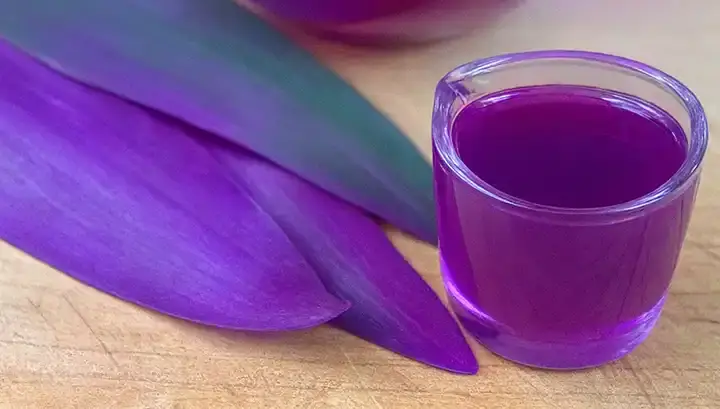The purple maguey (Agave atrovirens or regional variants of Agave americana) is a striking succulent plant native to Mexico and Central America. Known for its deep violet or purple-tinged leaves and thick rosette structure, this plant has been treasured for centuries—not just for its beauty or use in making pulque and mezcal, but for its powerful medicinal properties.
From traditional Aztec remedies to modern herbal medicine, purple maguey has found its place as a natural healer. Here’s a comprehensive look at the health benefits, traditional uses, and the science behind this remarkable plant.
🌿 1. Powerful Anti-Inflammatory Properties
What it helps: Joint pain, swelling, arthritis, injuries
Traditional healers have long applied crushed maguey leaves or sap directly to inflamed joints and swollen tissues. This natural remedy is thought to reduce inflammatory cytokines, thanks to the presence of saponins and flavonoids in the leaf.
- How it’s used: Fresh leaf poultices or topical applications of the juice
- Modern insight: Studies confirm that agave sap contains anti-inflammatory compounds that may reduce local inflammation when applied externally.
🩹 2. Wound Healing and Skin Regeneration
What it helps: Burns, cuts, ulcers, skin infections
The gel inside purple maguey leaves acts similarly to aloe vera. It promotes faster healing by keeping wounds moist, delivering antimicrobial compounds, and stimulating tissue regeneration.
- Traditional use: Leaves split open and applied to wounds, especially in rural areas with no access to modern medicine.
- Scientific note: Agave’s sap contains fructans and steroidal compounds that support cellular repair and fight bacterial growth.
🌱 3. Detoxification and Liver Support
What it helps: Liver stagnation, poor digestion, toxin buildup
In traditional Mexican medicine, a tea made from maguey leaf or root was used to “purify the blood” or cleanse the liver. While the exact mechanism wasn’t known at the time, modern research now supports the idea that certain agave species may stimulate bile flow and detoxification enzymes in the liver.
- How to consume: Lightly boiled decoction of dried or fresh maguey leaves
- Precaution: It must be used in moderation; large quantities can be too harsh on the digestive tract.
🧪 4. Antimicrobial and Antifungal Effects
What it helps: Skin infections, athlete’s foot, minor fungal conditions
The purple maguey has been used topically to treat infections caused by bacteria and fungi. The juice and leaf extract have shown natural antiseptic and antifungal activity, useful for disinfecting wounds and preventing secondary infections.
- Key compounds: Saponins, inulin, and polyphenols
- Traditional method: Sap applied directly to infected area or used to rinse wounds
❤️ 5. Blood Sugar Regulation
What it helps: Type 2 diabetes, insulin resistance
Though not a substitute for medical treatment, some traditional uses of purple maguey include managing blood sugar levels. Its natural inulin content—a prebiotic fiber—may slow glucose absorption and improve gut microbiota, indirectly supporting glucose metabolism.
- Scientific view: Inulin helps delay carbohydrate absorption and improves insulin sensitivity in some studies.
- Caution: Only used under supervision or as a dietary aid—not a stand-alone cure.
🍽️ 6. Digestive Aid and Prebiotic Source
What it helps: Constipation, poor gut flora, bloating
The natural fiber and inulin found in purple maguey stimulate bowel movement and feed healthy gut bacteria. Traditionally, it was consumed as a mild laxative or digestive tonic, especially after heavy meals.
- Preparation: Decoction of the inner leaf or fermentation of the sap into a light drink
- Modern use: Prebiotic supplements are now extracted from agave for gut health.
🧘 7. Immune System Booster
What it helps: Weak immunity, recurring infections
The compounds found in purple maguey, including saponins and flavonoids, are known to stimulate the immune system. In traditional use, it was given during seasonal changes or after illness to support recovery.
- Common preparation: Leaf extract added to herbal tonics
- Scientific insight: Early research shows that agave extracts may activate certain immune pathways and reduce oxidative stress.
🌺 8. Support for Urinary Health
What it helps: Urinary tract infections (UTIs), fluid retention
Purple maguey acts as a natural diuretic, helping the body eliminate excess fluids and flushing out bacteria from the urinary system.
- Traditional remedy: Leaf tea consumed over several days for kidney and bladder support
- Benefits: Promotes urination, reduces swelling caused by water retention
⚠️ Safety and Precautions
While purple maguey has many health benefits, it should be used with care:
- Raw sap can be irritating to sensitive skin.
- Overconsumption can cause digestive upset due to its saponin content.
- Always consult a herbalist or health professional before using maguey therapeutically, especially internally.
🧉 How Is It Traditionally Prepared?
- Topical Use: Leaf pulp or sap applied to wounds, burns, and joints.
- Internal Use: Light decoction (tea) made from small leaf pieces; rarely used in raw form.
- Fermented Forms: Pulque, a traditional Mexican beverage, was often made from maguey sap, with health benefits attributed to its probiotic content.
Final Thoughts
The purple maguey plant is more than a decorative succulent—it’s a testament to the wisdom of traditional medicine. From inflammation and infection to blood sugar and liver support, this vibrant plant continues to serve as a natural healer. While modern research is still uncovering its full potential, its centuries-old use is a reminder that some of nature’s most powerful remedies grow quietly in our backyards.
Inspired by this? Share the article with your friends!
